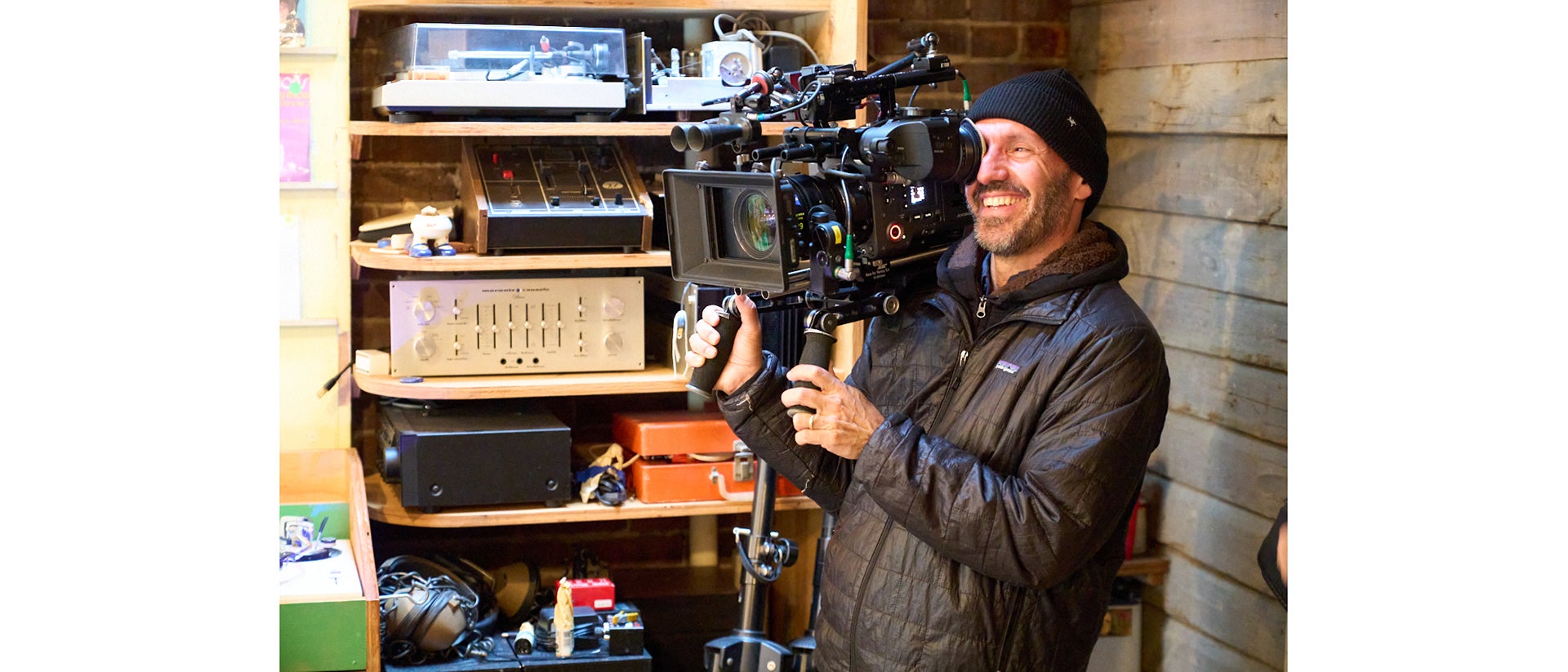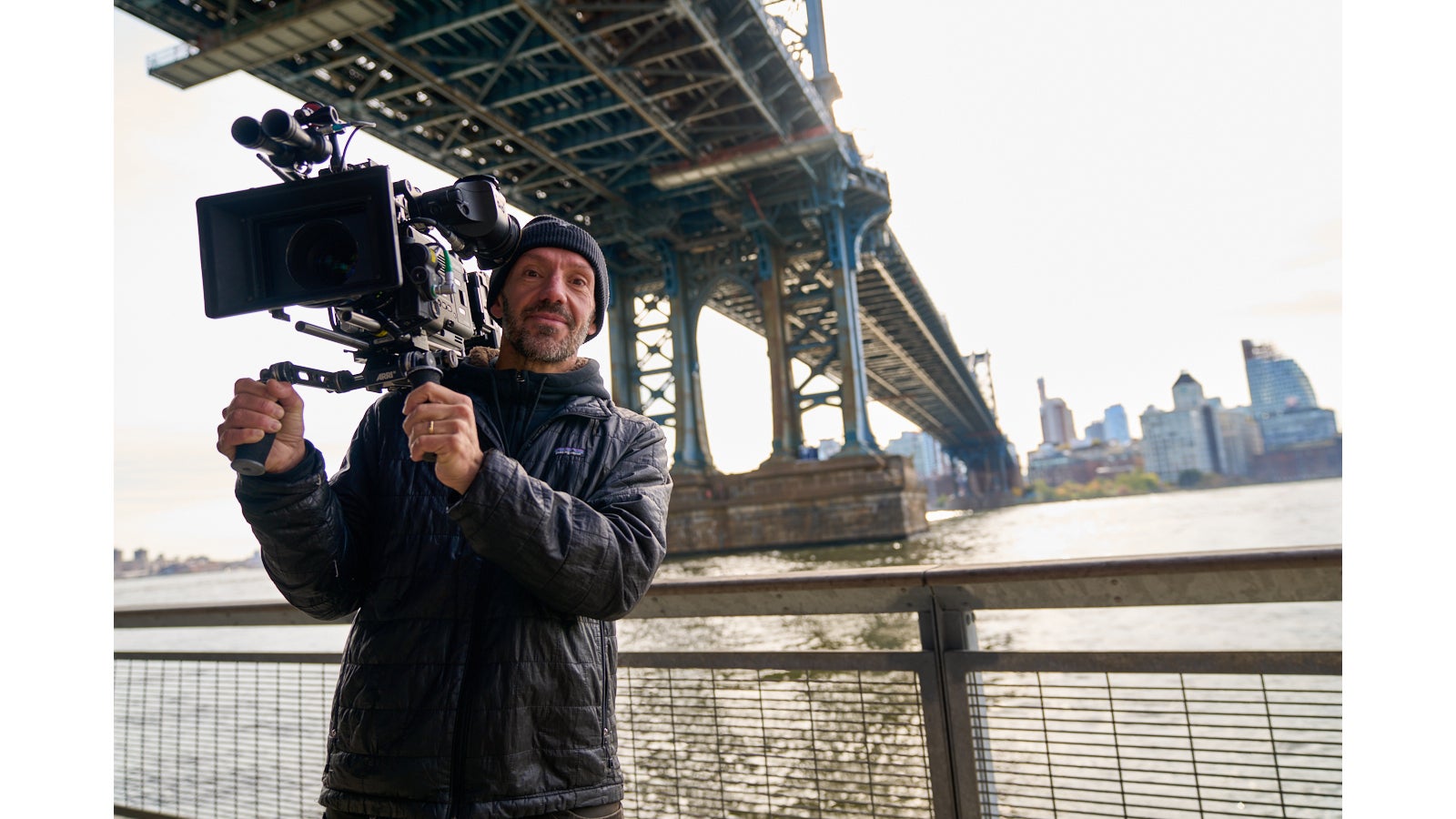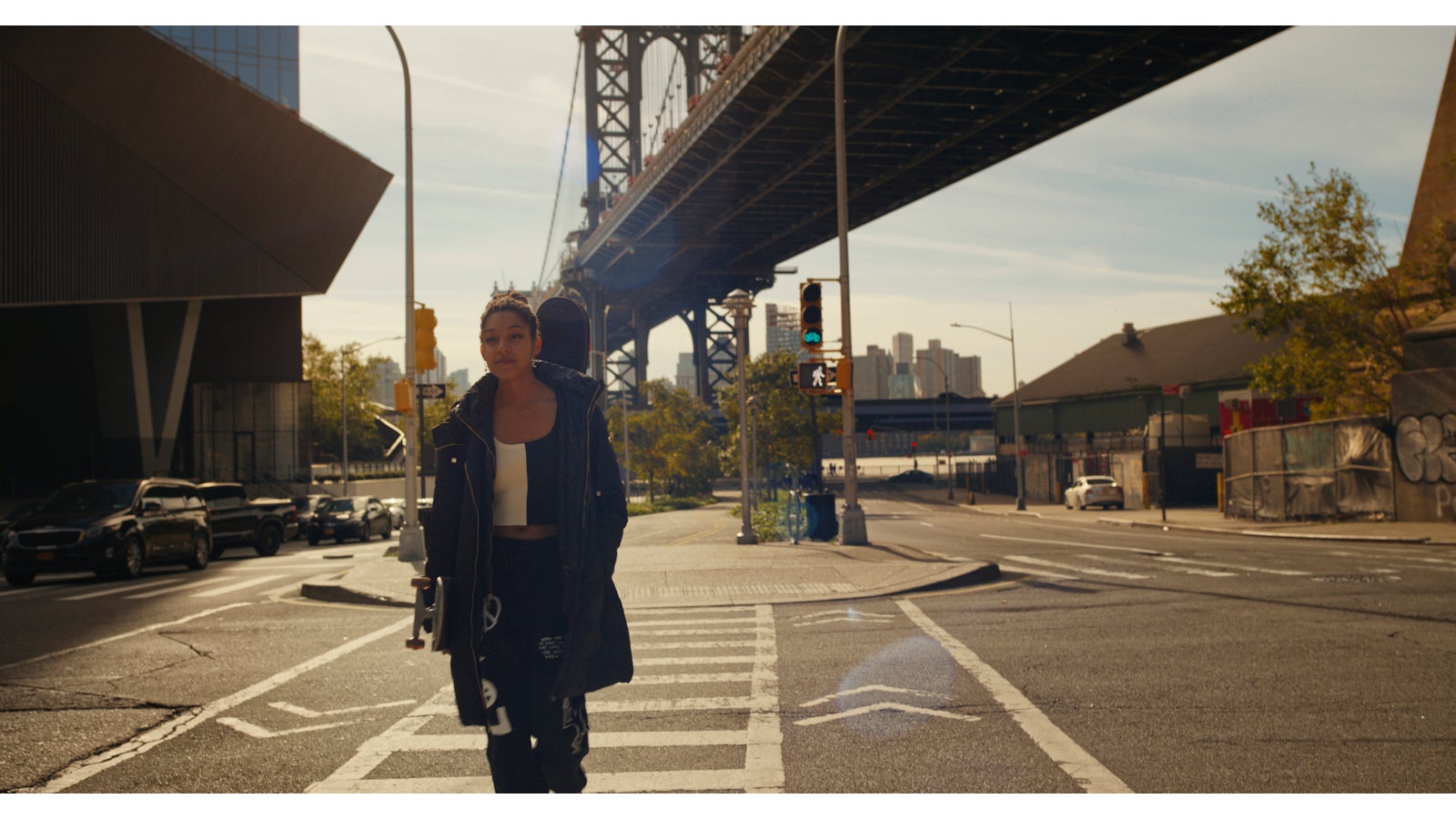
02-22-2022 - Case Study, Gear, Technology
A Roundtable Discussion with Steven Bernstein, ASC, Gonzalo Amat, ASC, and Colorist Patrick Woodard of Point.360 – Part 1
By:
SonyCine.com is privileged to feature a roundtable discussion conducted by Steven Bernstein, ASC, with Gonzalo Amat, ASC and Patrick Woodard, colorist. Amat recently shot one of the first films on the new VENICE 2 motion picture camera titled, Take Me, embedded below. It was color graded by Woodard.
Steven Bernstein:
Hi everybody. I'm Steven Bernstein, DGA, WGA, ASC. I was a cinematographer for over 30 years. I'm a director and a screenwriter. I'm here with two associates and new friends. We're going to be talking about a wide range of things today. Principally about the cinematographer's relationship with the colorist, but more significantly, how these two artists create the images you will subsequently see on a movie-screen or television screen. It's both more accessible and more complex than you imagine.
The other goal today is to talk about how technology has changed and improved and now offers us more flexibility than before and new variables that we can play with. So, if each of you could introduce yourselves, tell us what you do, we'll get into our discussion.
Gonzalo Amat:
I'm Gonzalo Amat. I am a cinematographer, ASC also. I direct; I'm also in the DGA. I started on commercials, went into movies, and now shoot television and streaming, and ended up directing. Now I'm doing both, shooting and directing.
Patrick Woodard:
My name is Patrick Woodard. I'm a senior colorist at Point.360 in Burbank. I work primarily on episodic television. However, I do a wide range of projects, commercials, and occasionally a feature film. I love working with creative people and on creative projects and hopefully making them look good.

Gonzalo Amat, ASC with VENICE 2 on location in New York City. Photo by Jeff Berlin
SB:
As a cinematographer, I think film is a language, and all the different components are different languages. Can you talk to me about the language of a camera, the variables you can control, and how that affects the image?
GA:
Sure. I mean, you have two variables outside of the camera: the lighting and set design and other things that you collaborate on with other people. Lighting is where I collaborate with my gaffer and lighting crew. And then you have the camera part of the look, which is color, temperature, exposure, what type of camera you’re using, lenses, even resolution formats. All those things will dictate what the final image looks like.
And then, after that, you have the color correction. I sometimes think of it as the last opportunity to re-do something or even re-light something. Or change the idea you had initially because sometimes, you do a project, and for narrative purposes, a scene ends up in a different order or a different time of day to than it was scripted. So maybe a dark scene will end up being day, stuff like that happens all the time. Or if you're shooting in difficult weather conditions and matching is an issue, you might have to correct it in post. Things like that. I find the color correction process is an opportunity to do the final pass of your original intention. And for me, the colorist is basically a collaborator who's going to try and realize your vision and say, "What if we try this?" Because they have fresh eyes on the material, sometimes a good collaboration will push your material to be even better, or something you didn't expect.
SB:
How baked in are the decisions that you make on set? We hear a lot of people talk about RAW. I want to discuss how much you can change in post-production, how much you want to prevent from being altered, and how much you work with the DIT?
GA:
I guess it depends on the project. Sometimes I have a DIT on set that I can collaborate with and try and go for the look I want at that stage. I might experiment and get the beginning of a radical “look." But that is as far as I go, because I know that with the RAW data I can always go back and change whatever I have already done. So, I have this margin of safety which allows me to take risks, discover what might work, but still change it later if I want.
If I don't have a DIT, then I just try to optimize exposure, so that I can do proper color correction later. if I am dealing with visual effects or other things, I can't really "bake" a look into my work without affecting their work. So, I tend to be a little more conservative when not working with a DIT especially when I have effects to do.

Still frame from "Take Me"
SB:
Do you have a single LUT, many different LUTs, or does it depend on the project?
GA:
Yeah. I think it depends on the project. For me, I think LUTs are just tools that help you expose or help people visualize an idea. But they also can be flawed. Like let's say you do a LUT for an exterior day, and it works beautifully. And then you use the same LUT when you start losing daylight and it just doesn't work anymore. So, I try to be a little simpler when it comes to LUTs. I try not to go too crazy with them because I know it can affect your decisions in the end. It is an imperfect system, I would say.
SB:
Yeah, experimenting with "looks" with a DIT is great for the cinematographer; it’s trial and error and they can look at what they and the DIT produce and learn things, and decide what to do later. But other people who see the experiments think "my God this is what it is going to look like, this is terrible." So, you have to correct them and say "No, this isn't what we're going to get." But they don't believe you.

Gonzalo Amat, ASC with VENICE 2 on location in New York City. Photo by Jeff Berlin
SB:
Patrick, you get materials from DPs like Gonzalo. When do you like to get involved ideally, and what information do you want from them to facilitate your job?
PW:
Ideally, I like to get involved even at the pre-production stage, just to be on the same page and go over the general visual aesthetics with the director of photography. Often, that upfront conversation is to get the idea of what the plan for the execution is and if we need to develop a lookup table (LUT). Using a LUT is going to allow us to create a close approximation of the look that will end up on the film or tv screen when our work is projected or transmitted. If that's what we want in the end. We may change our minds. With RAW, we can later alter what we created with the LUT. .
Modern cameras record so much data that whatever we do with the LUT, we can change everything later. That's a great deal of safety and creatively flexibility. Another way of looking at it is this. Whatever we do, whatever look we create, we have the opportunity to improve it later.
SB:
And how do you like to get information from the DP? Could you talk about what color science is?
PW:
Personally, I'm a visual learner, so I like getting visuals from the DP, which inform me, and then we can discuss it. You want to figure out if those on set are seeing the same thing you are in the DI suite. The color science here, the relationship of what they are seeing on set and what we are seeing, is important to work out. Once it is, it is easier for those shooting to extrapolate a theory about what their material will look like later in the DI. But monitors are a tricky thing, and the environment they are looking at the monitor in, also affects what they see. So, it needs a lot of discussion in preproduction to make sure everyone understands what is different and what is the same about what they are looking at.
I like to really understand what the DP and director wants. So, for me, I like references sent to me, and early on I like to get involved in the camera tests, as early and as crazy as that may seem. But it means I can start to build some options based on the references from that text, give feedback to the DP and start to build both a look and a rapport.

Gonzalo Amat, ASC with VENICE 2 on location in New York City. Photo by Jeff Berlin
SB:
Before a shoot starts, do you like to see if the monitors on set, and in the editing room and in the DI, can all be "matched" so that the look established on set is carried on through to the end of the production process?
PW:
Yes, in a perfect world, we would all be looking at the same monitor, but we know that's not the case. So generally, for me, it's just more about the broad strokes of the overall look. And then if I need to communicate with the DIT on set for example "Hey, these blacks aren't tracking." Or if I send out a reference to them that looks correct on their monitor, or if they see something that doesn't look great, then we can have that technical conversation to make sure we're looking at generally the same image. With the way things have been the last couple of years, working remotely has become the norm.
SB:
I think it would be fair to say from what both of you are saying, that we create a ballpark image on set, but in the post production, we're almost starting from scratch.
Still, even if the DP's visual plan is known and even if the DIT uses the agreed LUT and the colorist does the same, it still may not be to the DP's satisfaction. Sometimes the DP just wants to start from scratch when arriving at the DI. Does that happen?
PW:
Yes, that happens. I think you want to have some flexibility in the DI because you don't want to be absolute. To Gonzalo's point, the DP sees the material in the context of the edit and realizes it may need to change to match or contrast the shots that are now around it. So, I fully expect changes when the DP comes in.
SB:
Gonzalo, Patrick brings up an interesting point that he was very diplomatic about, about the other people and what they see and their expectations. How do you deal with producers and directors and everybody else involved who want substantive input into the look of the film?
GA:
It's always very tricky. I mean, in the end, it's a collaborative process. So, it's not necessarily bad to have people talking about the look, if they do it respectfully. I did a project recently which took place in the 80s. We had a scene in a Mormon church. So, I lit the scene, and the producer came to me and said, "Hey, I want to let you know that Mormon churches are not dark and Gothic. There's a lot of light in Mormon churches." So, we had a conversation about it, and I adjusted the lighting to make it truer to what a Mormon church actually looks like. In the end, I'm trying to realize what's best for the story. It's a collaboration. There’s no ego involved. But at the same time, everyone has their own opinions.

Still frame from "Take Me"
SB:
Let’s talk about darkness and shadows. We all know when we shoot a film with a recognizable actor the audience sees them in an early scene and knows who they are. Then, you come to a dramatic night scene, and you decide not to fully show the actor. You know that the audience knows the actor's face by this point. So, the DP only uses a little back light and just gets the shape of the actor. And then a producer says, "Do you know how much we paid for that actor? We can't see their face." So that's a dilemma. There's a view, particularly in television, that darkness and shadow are bad.
PW:
I like a dark aesthetic if it's appropriate. But I think one must be aware that the viewing environment is not always a cinema theater. So, you do have to be conscious of that. And from my standpoint, I try to present options to the DP or to the producer's and the director if they come in at some point as well.
GA:
Yeah. It's tricky because you want to go dark sometimes. For me, there's a sweet spot in which you can still have the mood that you want, but at the same time, if there's a nuanced performance, I like to play it safe and leave a margin of error so I can fix it later or try to in post if that is necessary. Holding the exposure in shadows, and not letting lights overexpose in the highlights.
SB:
Yes, and what you're saying about adding fill to close-ups is significant. The eye in a wide shot will see contrast differently than in a close-up. The other thing you said, which is very important, was about the streaming services. They compress the image. It will change as a result of the compression before release. So, what you see in the DI might not be what is shown in the cinemas.
Patrick, you said, the image will eventually be viewed in many different locations on many different types of monitors. Do you have other monitors set up in your bay so you can for example see what it looks like on a TV as well as a big screen?
PW:
We do. I work off a 30-inch reference monitor, and I have a 65-inch monitor for the client in the room. Sometimes I'll do a pass, and I'll sit back where the client is and take it in from beginning to end to see how it affects me. I am always surprised at where we started at the beginning of the process and where we end up.
Stay tuned for Part 2, coming very soon.
Steven Bernstein, ASC Instagram




